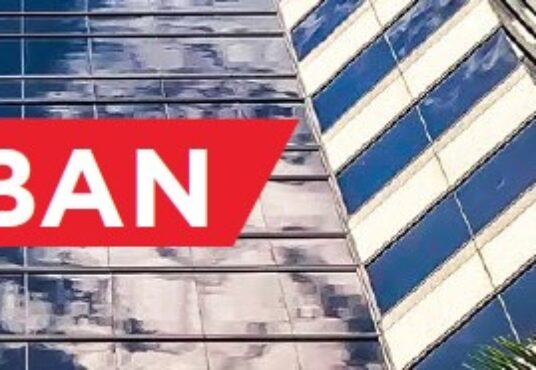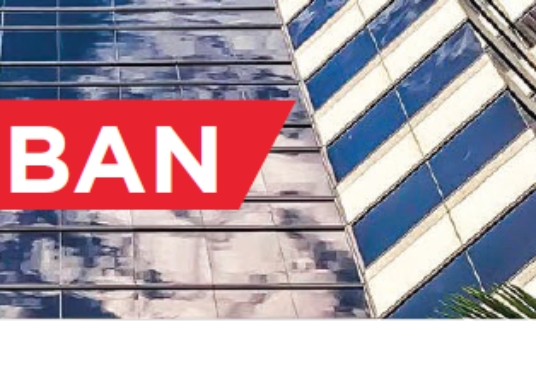U.S. Office Markets Remain Stable in Q1 2018
Continuing trends of recent years, the United States office market experienced solid leasing activity, absorption and construction during the first quarter of 2018 (Q1 2018). Overall office vacancy increased slightly—from 13.1% at year-end 2017 to 13.3% at the close of March 2018. The national office vacancy has remained in a narrow range between 13.1% and 13.3% since the second quarter of 2016.
Demand remains steady: Total demand in the 87 office markets we track increased in the first quarter of 2018 as slightly more than 8.1 million square feet (msf) was absorbed off the market. While this was less than the 13.8 msf absorbed in Q4 2017, it was greater than the 7.2 msf absorbed in the first quarter of 2017, a more comparable period. New leasing activity totaled 65.6 msf in Q1 2018, lower than the volume a year earlier. It’s important to note that 2017 was the strongest year for new leasing in a decade, so some slowdown was not a surprise. Leasing activity in Q1 2018 was on par with the quarterly average 67.1 msf of the past five years.
Technology and tech markets dominate demand: Technology and financial services sectors accounted for the bulk of demand for office space during the first quarter of 2018—capturing approximately 42% of all leasing. Including demand from professional services—accounting, consulting and legal services—accounted for roughly 55% of all leasing volume in the quarter. Seven leases topped 400,000 square feet (sf) in the first quarter led by Facebook’s 1.0 msf lease in San Jose . Not surprisingly, then, San Jose ranked second in total leasing volume for the quarter registering 5.6 msf, trailing only Midtown Manhattan’s 5.9 msf. Boston ranked third in leasing volume at approximately 4.7 msf—largely made up of smaller transactions.
The West region dominated first-quarter absorption, capturing 7.0 msf of the total 8.1 msf (or 86.3%) absorbed in Q1 2018. Four of the top five absorption markets were in the West, led by San Francisco (2.2 msf) and Seattle (1.4 msf). Midtown Manhattan (roughly 970,000 sf), Phoenix (850,000 sf) and San Jose (840,000 sf) rounded out the top five.
Supply keeps coming: At 11.8 msf, new construction completions outpaced absorption, contributing to the modest rise in the national vacancy rate from 13.1% in Q4 2017 to 13.3% in Q1 2018. Despite these completions, the current pipeline under construction increased from 102.9 msf to 103.1 msf, indicating that construction starts were even higher than completions. Cushman & Wakefield currently estimate that 69.5 msf of new office space will be delivered in 2018—the highest volume of new space since 2008. Over the past five years new construction deliveries have averaged 44.0 msf.
Much of the pipeline is concentrated in high growth markets which are able to absorb the new supply. Currently, the 10 markets with the largest new construction pipelines account for 47.2 msf or 45.7% of the national construction pipeline. Over the past two years, employment in office-using industries in these 10 markets grew 5.6%, much faster than the 3.8% increase reported for the U.S. as a whole, suggesting that they are well positioned to absorb the new construction.
Approximately 29.4 msf of the construction pipeline is build-to-suit, with the remaining 73.8 msf speculative and about 20 msf of that speculative construction pre-leased. The pipeline of available new space is approximately 54 msf. The existing space that tenants are vacating will also have an impact on the market, but some of that new space will be taken by tenants that are expanding and the impact will be less substantial than the total construction numbers suggest.
The interaction of rising demand—in the form of positive space absorption—and rising supply of new space has impacted vacancy. Forty-two markets experienced an increase in their vacancy rates quarter-to-quarter and in 32 markets the vacancy rates declined. Vacancy rates in the rest of the markets were unchanged. The first quarter of 2018 was the second time since 2010 in which there were more markets posting an increased vacancy rate than a declining one from the previous quarter.
The impact from the tech sector is also evident in the vacancy statistics. The three major markets with the lowest vacancy rates in the nation were Midtown South Manhattan (6.5%), San Francisco (7.6%) and Seattle (8.1%), all of which are among the largest technology hubs in the nation.
Rents stabilize: The national weighted average asking rent declined 0.2% from its level in the fourth quarter of 2017, the first decline in total rent since Q2 2011. Despite the overall decline, 45 of the 87 markets tracked by Cushman & Wakefield experienced an increase in rents during Q1 2018 while 35 markets saw rents decline. Rents in eight markets were unchanged quarter-to-quarter. On a year-over-year basis, the national average asking rent rose 1.9%. Markets that saw large rent increases include Orange County, CA (+21.1%), Charlotte (+10.4%), Atlanta (+9.7%), San Diego (+8.6%) and Portland, OR (+7.3%).
The highest rents in the nation remain concentrated in the New York and San Francisco metro areas. The top five rental markets were the three in Manhattan—Midtown ($77.07 per square foot [psf]), Midtown South ($69.13 psf) and Downtown ($59.67 psf)—as well as San Francisco ($71.40 psf) and San Mateo County, CA ($58.06 psf). With average rents in Washington, DC at $54.75 psf, there were six markets with asking rents above $50.00 psf.
After a banner year in 2017, U.S. office markets experienced more balanced growth in the first quarter of 2018. Demand for office space remained healthy primarily driven by strong employment growth. But supply is starting to catch up to demand. Cushman & Wakefield anticipate 2018 will be the year in which the largest amount of square footage is added to the national inventory in a decade. This additional supply is much needed in many CBD markets where tenants are taking space. Overall, we are confident that job growth will remain at a level sufficient to absorb the new space coming to the market. Still, there will likely to be markets across the nation where rising supply creates opportunities for tenants.
Outlook:
- Stimulus from the Tax Cuts and Jobs Act of 2017 are expected to keep demand for office space growing at a strong pace in 2018. In fact, office-using job growth in Q1 2018 was stronger than the 2017 average.
- This growth will counterbalance the impact of rising new construction and keep the national office market vacancy rate essentially stable in the coming year.
- A vacancy rate slightly above 13% is low enough that it should put mild upward pressure on asking rents for the balance of 2018.
- Of course, there will be markets where supply outstrips demand creating opportunities for tenants.






